Abstract
The Great Lakes basin is of radiologic interest due to the large population within its boundaries that may be exposed to various sources of ionizing radiation. Specific radionuclides of interest in the basin arising from natural and artificial sources include 3H, 14C, 90Sr, 129I, 131I, 137Cs, 222Rn, 226Ra, 235U, 238U, 239Pu, and 241Am. The greatest contribution to total radiation exposure is the natural background radiation that provides an average dose of about 2.6 mSv/year to all basin residents. Global fallout from atmospheric nuclear weapons tests conducted before 1963 has resulted in the largest input of anthropogenic radioactivity into the lakes. Of increasing importance is the radionuclide input from the various components of the nuclear fuel cycle. Although the dose from these activities is currently very low, it is expected to increase if there is continued growth of the nuclear industry. In spite of strict regulations on design and operation of nuclear power facilities, the potential exists for a serious accident as a result of the large inventories of radionuclides contained in the reactor cores; however, these risks are several orders of magnitude less than the risks from other natural and man-made hazards. An area of major priority over the next few decades will be the management of the substantial amounts of radioactive waste generated by nuclear fuel cycle activities. Based on derived risk coefficients, the theoretical incidence of fatal and weighted nonfatal cancers and hereditary defects in the basin's population, attributable to 50 years of exposure to natural background radiation, is conservatively estimated to be of the order of 3.4 x 10(5) cases. The total number of attributable health effects to the year 2050 from fallout radionuclides in the Great Lakes basin is of the order of 5.0 x 10(3). In contrast, estimates of attributable health effects from 50 years of exposure to current nuclear fuel cycle effluent in the basin are of the order of 2 x 10(2). Although these are hypothetical risks, they show that the radiologic impact of man-made sources is very small compared to the effects of normal background radiation.
Full text
PDF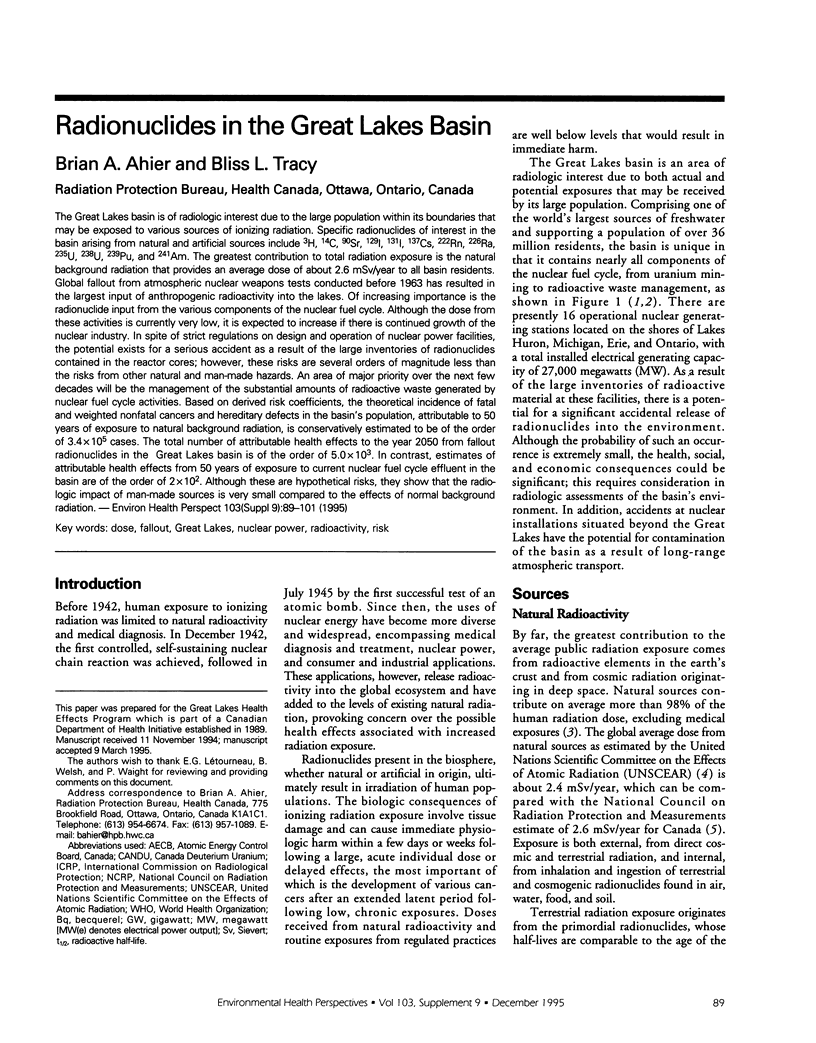

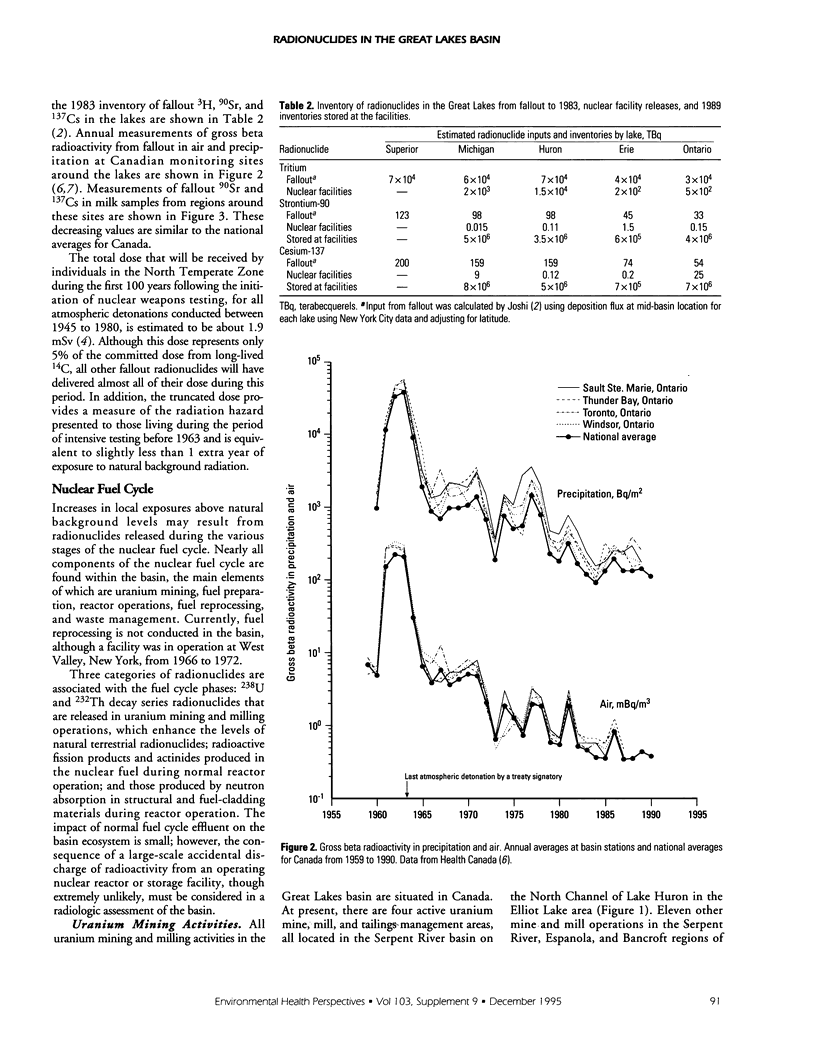
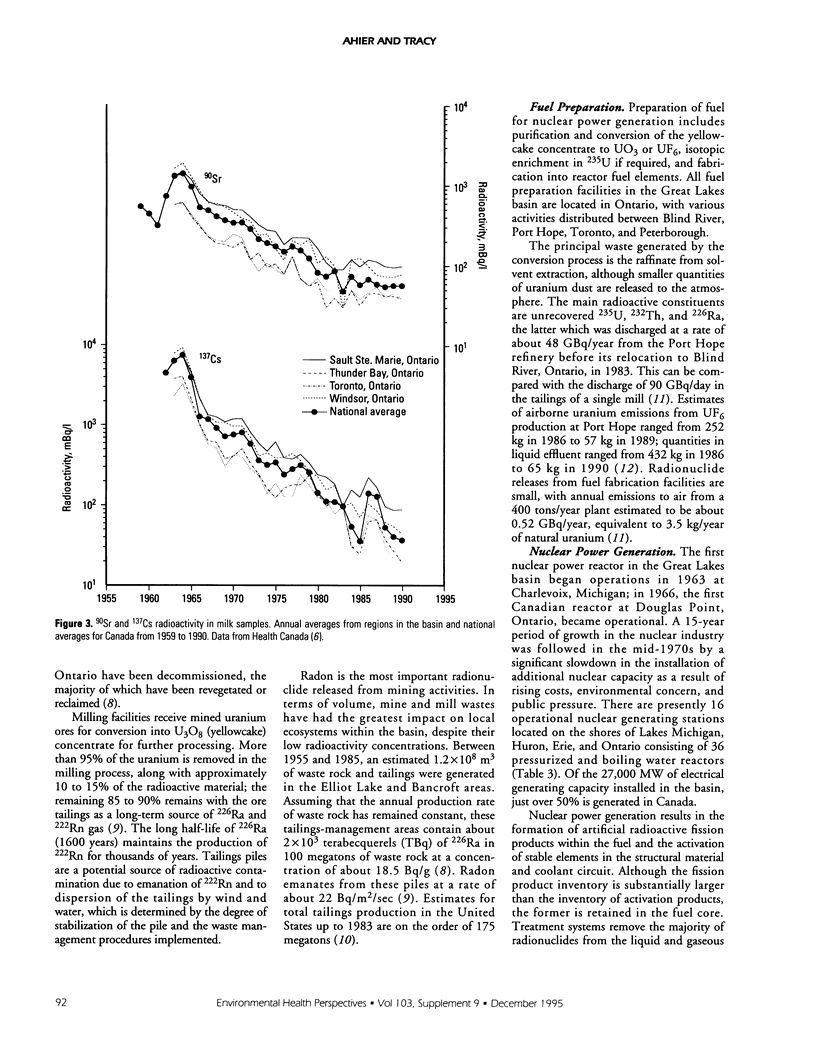
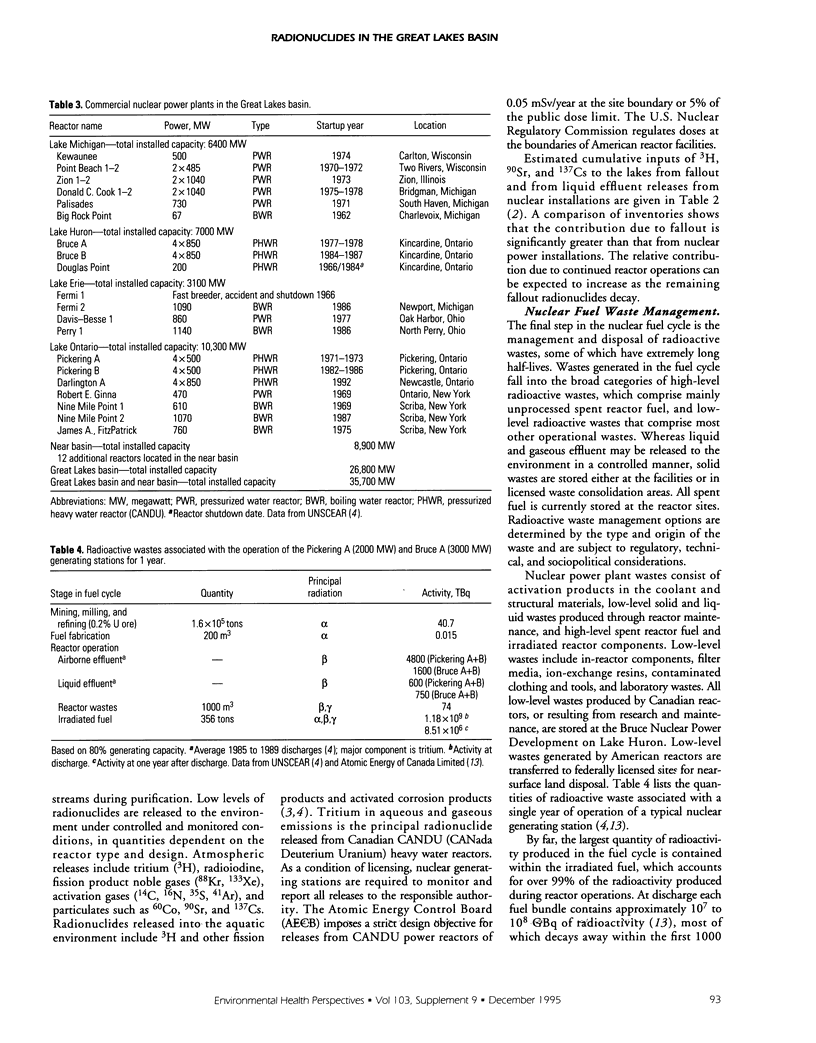
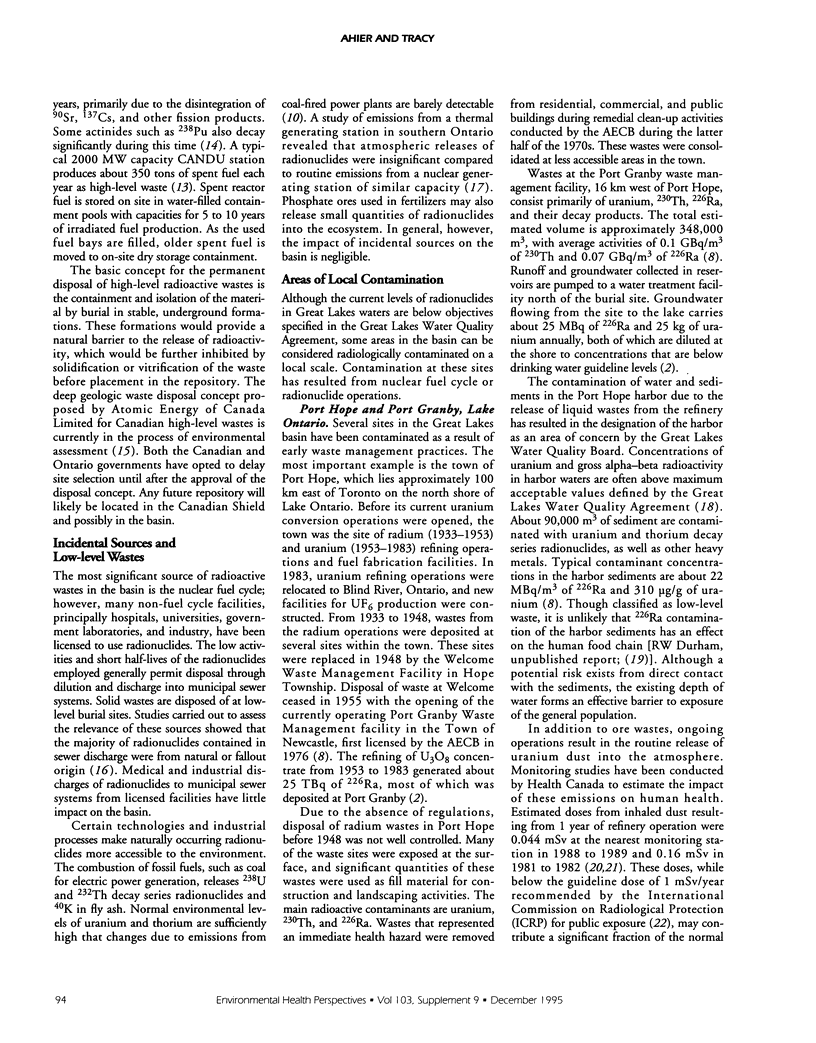
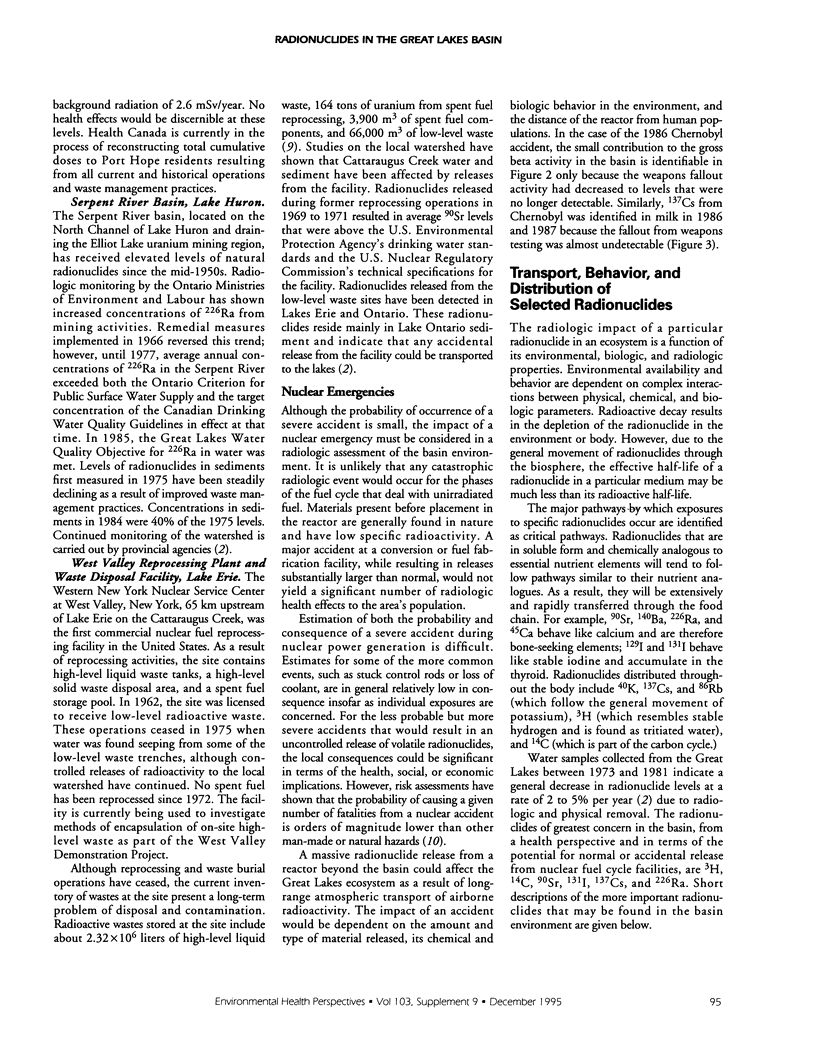

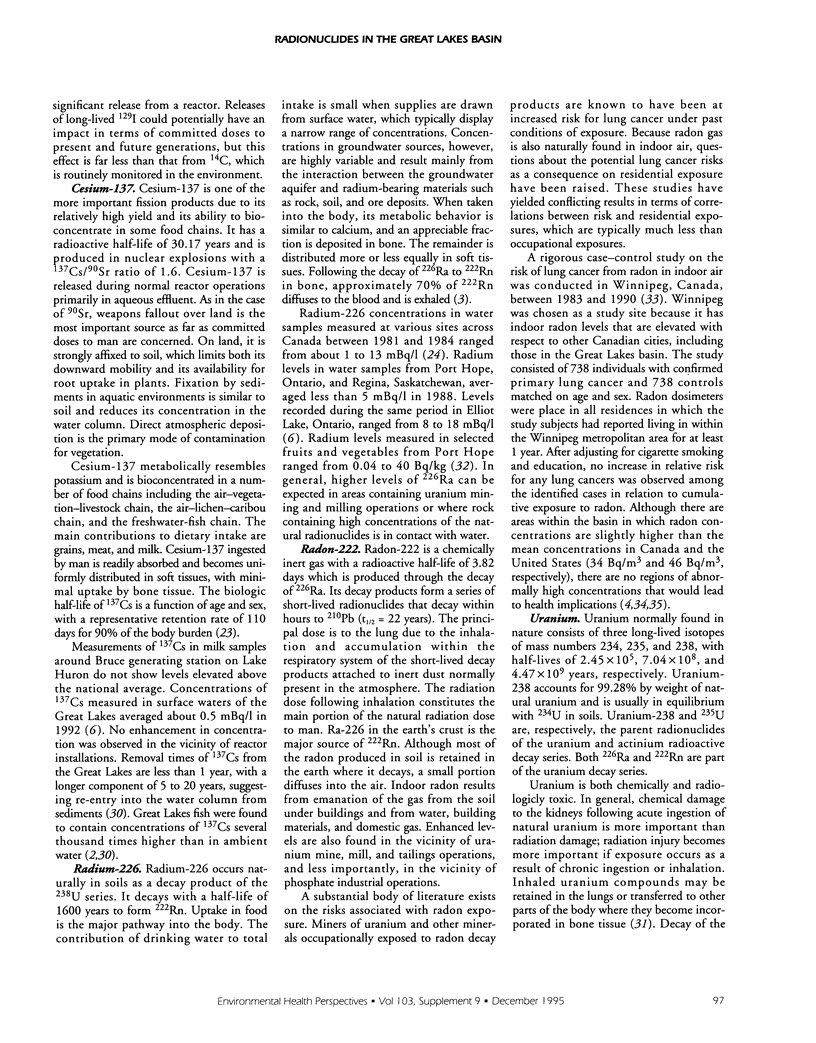
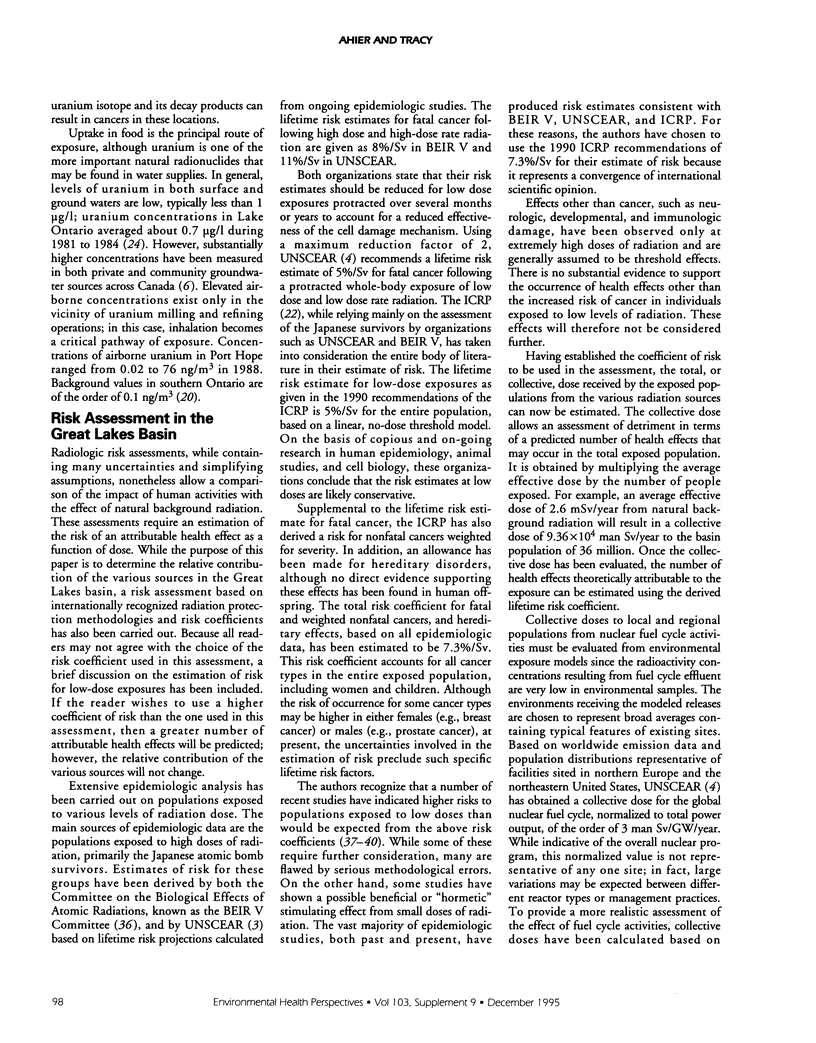
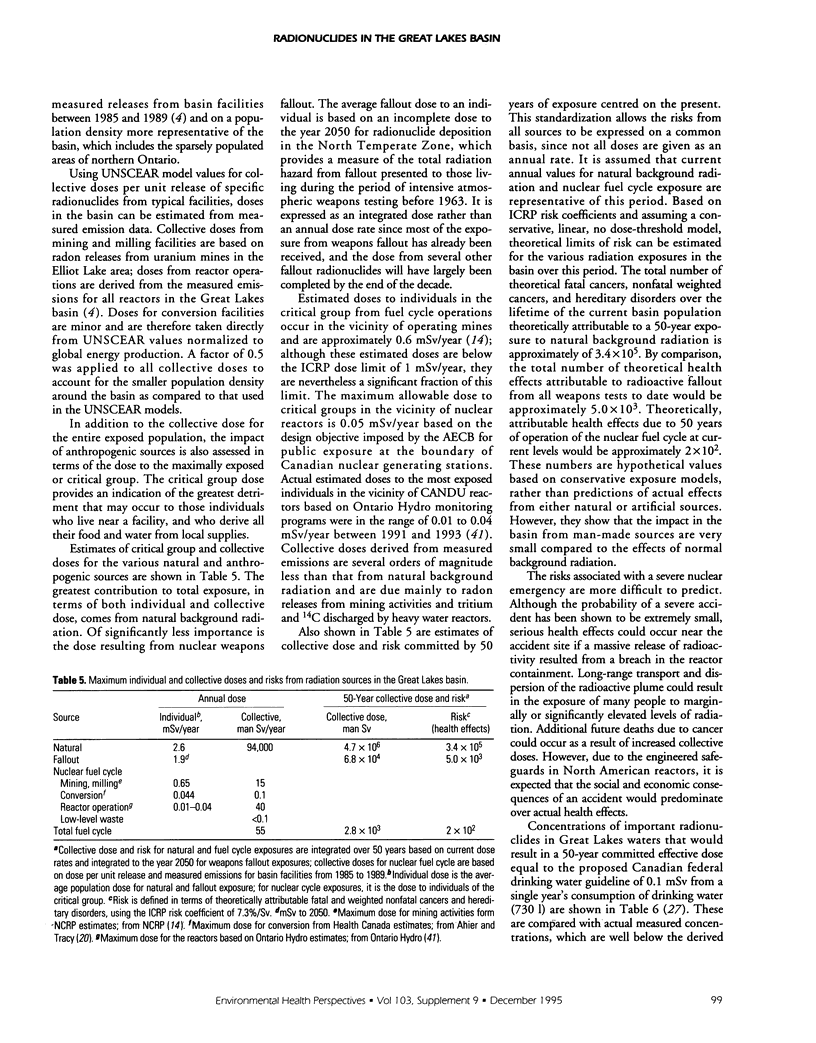
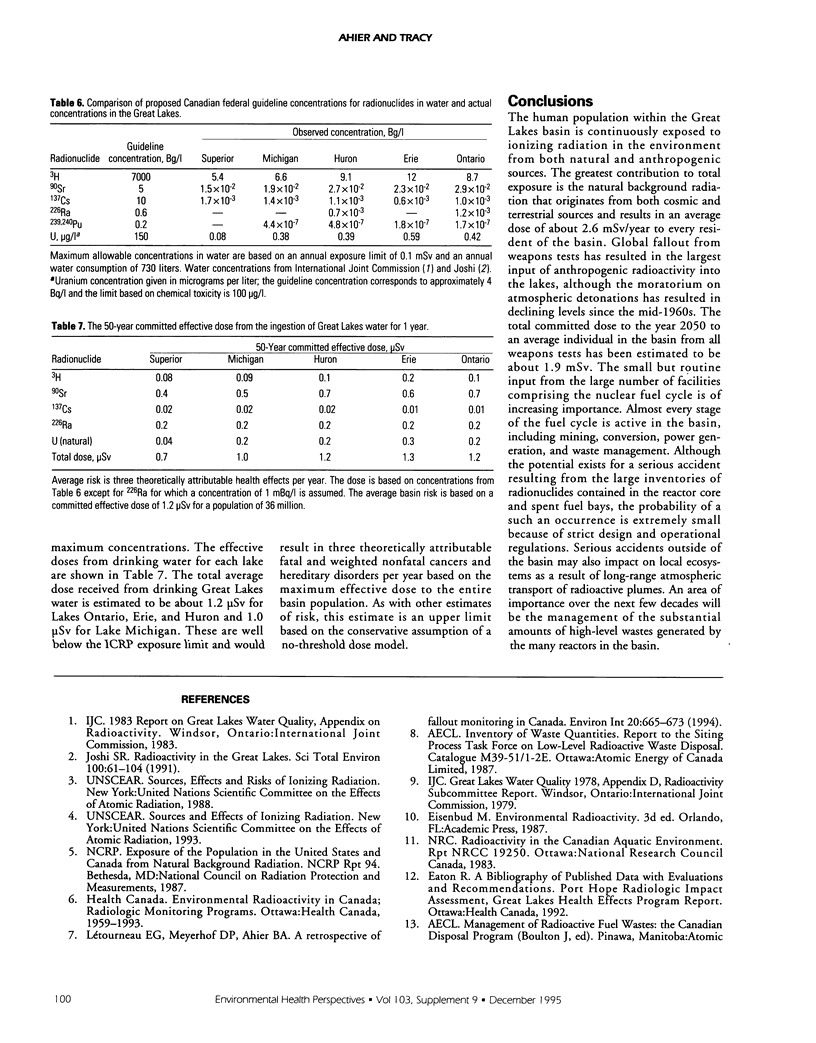
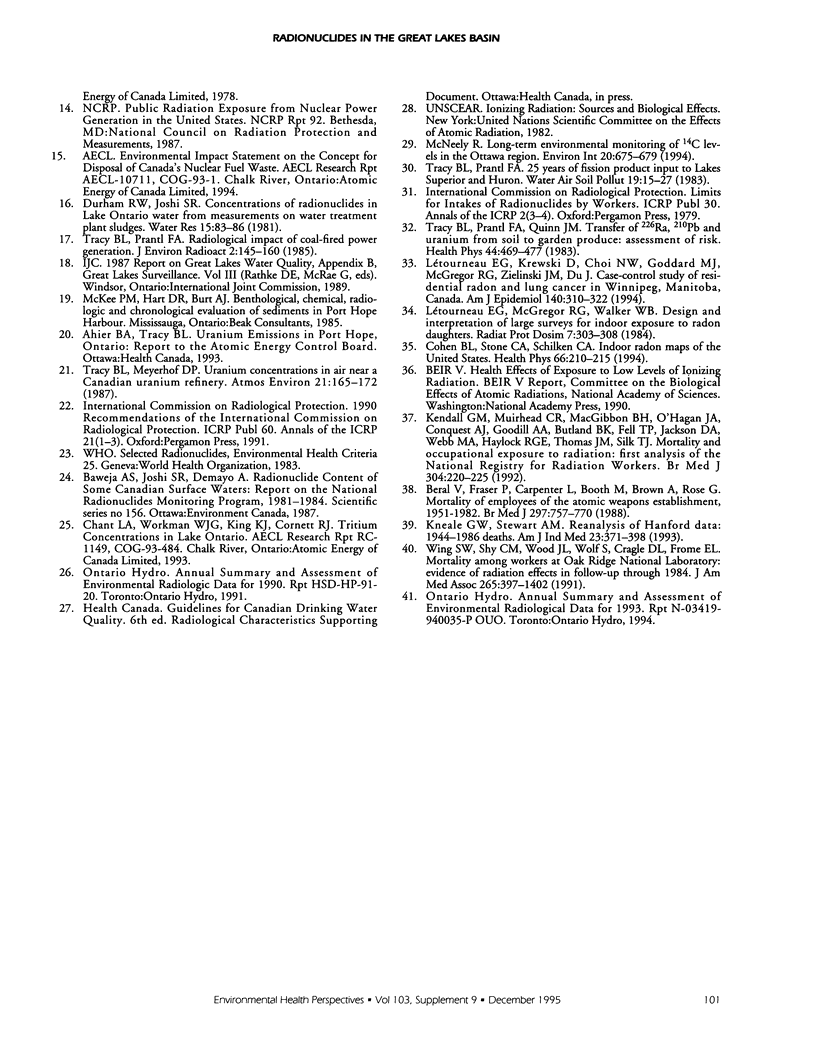
Selected References
These references are in PubMed. This may not be the complete list of references from this article.
- Beral V., Fraser P., Carpenter L., Booth M., Brown A., Rose G. Mortality of employees of the Atomic Weapons Establishment, 1951-82. BMJ. 1988 Sep 24;297(6651):757–770. doi: 10.1136/bmj.297.6651.757. [DOI] [PMC free article] [PubMed] [Google Scholar]
- Joshi S. R. Radioactivity in the Great Lakes. Sci Total Environ. 1991 Mar;100(Spec No):61–104. doi: 10.1016/0048-9697(91)90374-n. [DOI] [PubMed] [Google Scholar]
- Kendall G. M., Muirhead C. R., MacGibbon B. H., O'Hagan J. A., Conquest A. J., Goodill A. A., Butland B. K., Fell T. P., Jackson D. A., Webb M. A. Mortality and occupational exposure to radiation: first analysis of the National Registry for Radiation Workers. BMJ. 1992 Jan 25;304(6821):220–225. doi: 10.1136/bmj.304.6821.220. [DOI] [PMC free article] [PubMed] [Google Scholar]
- Kneale G. W., Stewart A. M. Reanalysis of Hanford data: 1944-1986 deaths. Am J Ind Med. 1993 Mar;23(3):371–389. doi: 10.1002/ajim.4700230302. [DOI] [PubMed] [Google Scholar]
- Létourneau E. G., Krewski D., Choi N. W., Goddard M. J., McGregor R. G., Zielinski J. M., Du J. Case-control study of residential radon and lung cancer in Winnipeg, Manitoba, Canada. Am J Epidemiol. 1994 Aug 15;140(4):310–322. doi: 10.1093/oxfordjournals.aje.a117253. [DOI] [PubMed] [Google Scholar]
- Tracy B. L., Prantl F. A., Quinn J. M. Transfer of 226Ra, 210Pb and uranium from soil to garden produce: assessment of risk. Health Phys. 1983 May;44(5):469–477. doi: 10.1097/00004032-198305000-00001. [DOI] [PubMed] [Google Scholar]
- Wing S., Shy C. M., Wood J. L., Wolf S., Cragle D. L., Frome E. L. Mortality among workers at Oak Ridge National Laboratory. Evidence of radiation effects in follow-up through 1984. JAMA. 1991 Mar 20;265(11):1397–1402. [PubMed] [Google Scholar]


